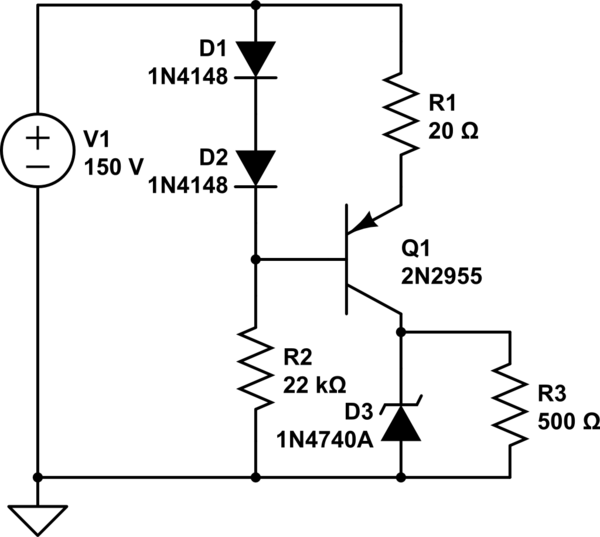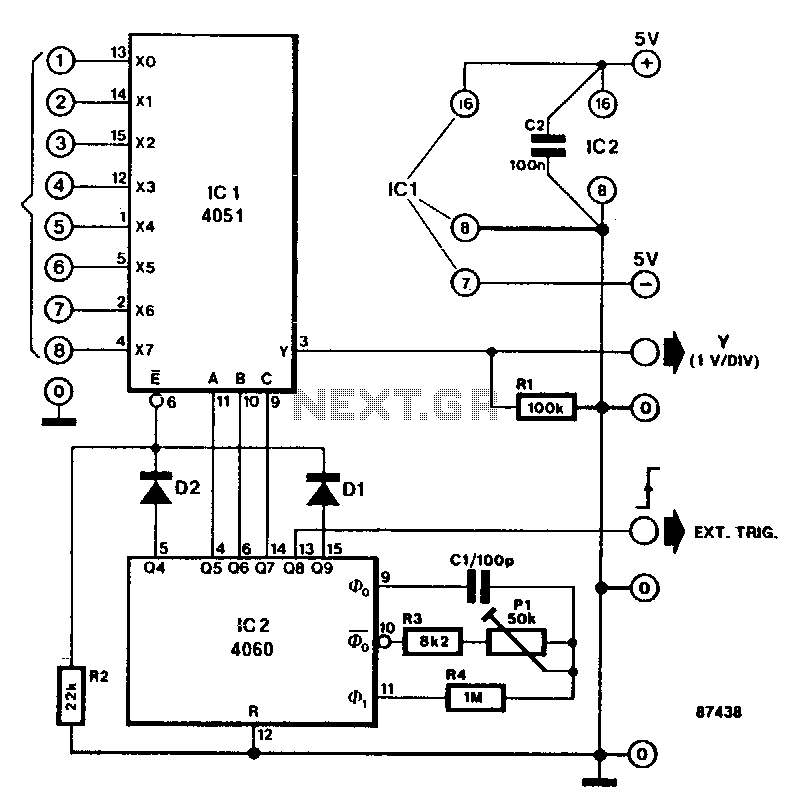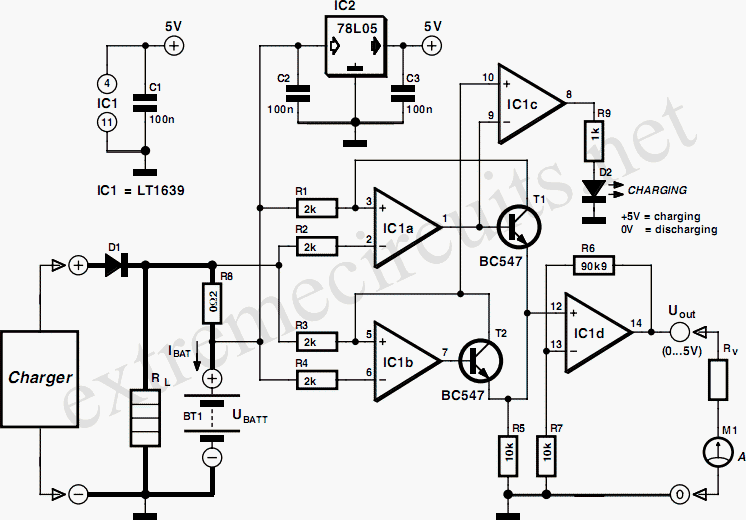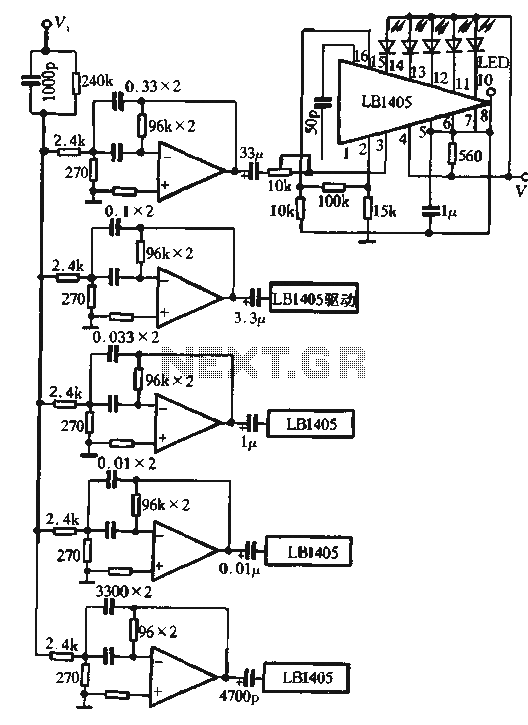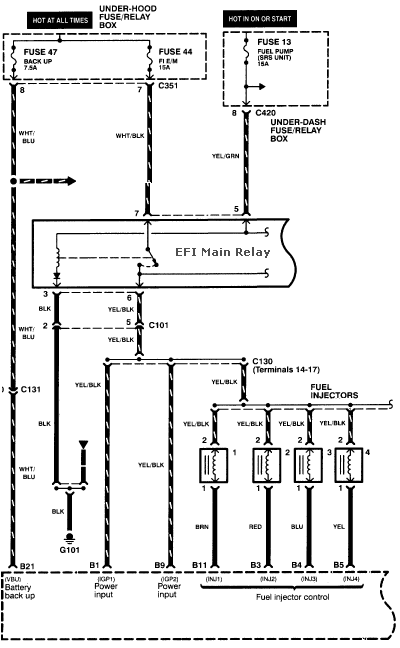
Wide Band Fuel Mixture Display
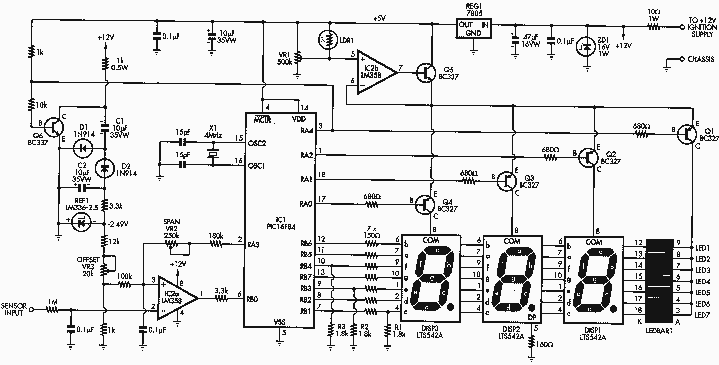
This document is an introduction to the Wideband Fuel Mixture Display (FMD). We modified the original Silicon Chip Fuel Mixture Display (that used a narrowband sensor) for use as a display for the DIY-WB wideband oxygen sensor controller. After first publishing how to modify the Jaycar KC-5300, we got Jaycar to make up the kits for us and we called them the TE-5300 display. These units were quite successful but we wanted them to be easier to build, so we created the improved TE-5301 display.
The Wideband Fuel Mixture Display (FMD) serves as a critical component in monitoring and adjusting the air-fuel mixture in internal combustion engines. The TE-5301 display is an enhanced version of its predecessor, the TE-5300, designed to provide a more user-friendly assembly process while maintaining high accuracy in the measurement of the air-fuel ratio.
The circuit incorporates a wideband oxygen sensor, which is capable of providing a broader range of air-fuel mixture readings compared to narrowband sensors. This capability allows for more precise tuning of the engine, resulting in improved performance and efficiency. The schematic includes a microcontroller that processes the sensor signals, translating them into a readable format for the display module.
Power supply requirements for the TE-5301 are minimal, typically operating within a range of 9-12V DC, which can be sourced from the vehicle's electrical system. The display unit interfaces with the sensor through a dedicated analog input, ensuring that the voltage levels corresponding to the air-fuel ratio are accurately captured.
Additional components such as resistors, capacitors, and operational amplifiers are utilized to filter and condition the sensor signals before they are processed by the microcontroller. The output is presented on an LCD or LED display, providing real-time feedback to the user.
The TE-5301 is designed with modularity in mind, allowing for easy upgrades and modifications. This flexibility is particularly beneficial for DIY enthusiasts and automotive tuners who may wish to customize the display for specific applications or preferences.
In summary, the TE-5301 Wideband Fuel Mixture Display represents an evolution in fuel mixture monitoring technology, combining ease of assembly, accurate readings, and flexibility for the user, making it an essential tool for optimizing engine performance.This document is an introduction to the Wideband Fuel Mixture Display (FMD). We modified the original Silicon Chip Fuel Mixture Display (that used a narrowband sensor) for use as a display for the DIY-WB wideband oxygen sensor controller. After first publishing how to modify the Jaycar KC-5300, we got Jaycar to make up the kits for us and we called them the TE-5300 display.
These units were quite successful but we wanted them to be easier to build, so we created the improved TE-5301 display. 🔗 External reference
The Wideband Fuel Mixture Display (FMD) serves as a critical component in monitoring and adjusting the air-fuel mixture in internal combustion engines. The TE-5301 display is an enhanced version of its predecessor, the TE-5300, designed to provide a more user-friendly assembly process while maintaining high accuracy in the measurement of the air-fuel ratio.
The circuit incorporates a wideband oxygen sensor, which is capable of providing a broader range of air-fuel mixture readings compared to narrowband sensors. This capability allows for more precise tuning of the engine, resulting in improved performance and efficiency. The schematic includes a microcontroller that processes the sensor signals, translating them into a readable format for the display module.
Power supply requirements for the TE-5301 are minimal, typically operating within a range of 9-12V DC, which can be sourced from the vehicle's electrical system. The display unit interfaces with the sensor through a dedicated analog input, ensuring that the voltage levels corresponding to the air-fuel ratio are accurately captured.
Additional components such as resistors, capacitors, and operational amplifiers are utilized to filter and condition the sensor signals before they are processed by the microcontroller. The output is presented on an LCD or LED display, providing real-time feedback to the user.
The TE-5301 is designed with modularity in mind, allowing for easy upgrades and modifications. This flexibility is particularly beneficial for DIY enthusiasts and automotive tuners who may wish to customize the display for specific applications or preferences.
In summary, the TE-5301 Wideband Fuel Mixture Display represents an evolution in fuel mixture monitoring technology, combining ease of assembly, accurate readings, and flexibility for the user, making it an essential tool for optimizing engine performance.This document is an introduction to the Wideband Fuel Mixture Display (FMD). We modified the original Silicon Chip Fuel Mixture Display (that used a narrowband sensor) for use as a display for the DIY-WB wideband oxygen sensor controller. After first publishing how to modify the Jaycar KC-5300, we got Jaycar to make up the kits for us and we called them the TE-5300 display.
These units were quite successful but we wanted them to be easier to build, so we created the improved TE-5301 display. 🔗 External reference
